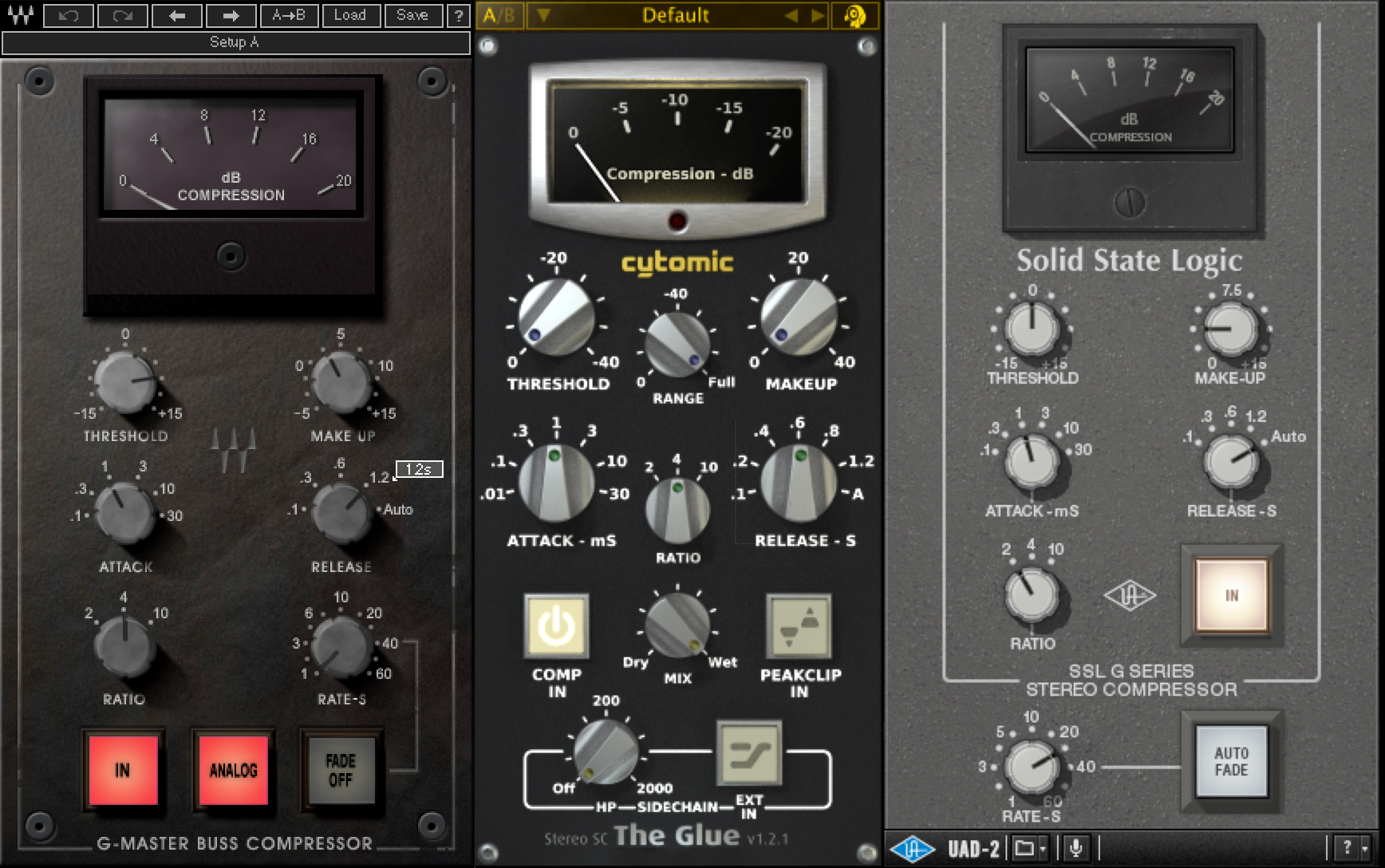

Lower ratios (like 2:1 or 4:1) mean you’re applying low to medium amounts of compression.īetween 8:1 and 20:1 you’re applying heavier compression. Keep the ratios in the low to medium range when you’re looking for a more natural effect.Īt 1:1 there isn’t any compression happening. Higher ratios give thump and punch, but can distort or add a pumping effect. The ratio is how much your compressor will compress. You know it’s working when there’s activity in your GR meter. When your signal hits the threshold that’s when the compressor starts working.ĭrag down your threshold until you see the compressor working. The threshold is the level (in dB aka decibels) at which your compressor starts to work. The main compressor settings are: threshold, ratio, attack and release. And always remember to use your ears too! Alway keep a clear intention in mind with your settings. To get the most out of your compressors you need to know how to use the settings right.

That’s good because it allows you to bring up the gain of the whole signal without clipping. So overall using compressors right gives you a more polished and punchier sound without going in the red. Well, compressors lower the volume of loud peaks–they even out the notes that stick out in the mix. You might be thinking: but isn’t reducing the dynamic range a bad thing?

When someone says a signal is very dynamic, it means that it varies a lot between quiet and loud parts–vocals are a good example of a sound with a wide dynamic range… like Mariah Carey! But they also reduce the dynamic range of a signal.ĭynamic range is the difference between the loudest and the quietest parts of a signal. They reduce the gain of your signal (‘GR’ stands for Gain Reduction on your DAW compressor). What is a compressor?Ĭompressors are funny creatures.

That’s good because it allows you to bring up the gain of the whole signal without clipping. Get to know them and start experimenting with your own sound… You’ll be a compression expert in no time!Ĭompressors lower the volume of loud peaks–they even out the notes that stick out in the mix. In this article you’ll learn 5 common mixing problems and how to solve them using compression. So you need to know what you’re doing to make it work for you-and actually solve your issue. They’re a key part of your audio effects toolkit.īut if used wrong, compression can significantly color (and even mess up) your sound-which is no good, especially when it’s time to master your music. Compressors are great problem-solvers when you’re mixing.


 0 kommentar(er)
0 kommentar(er)
